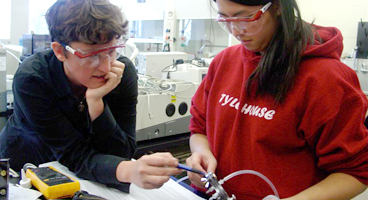Document Type
Article
Publication Date
6-1-2020
Publication Title
Ecohydrology
Abstract
Nature-based solutions for water-resource challenges require advances in the science of ecohydrology. Current understanding is limited by a shortage of observations and theories that can further our capability to synthesize complex processes across scales ranging from submillimetres to tens of kilometres. Recent developments in environmental sensing, data, and modelling have the potential to drive rapid improvements in ecohydrological understanding. After briefly reviewing advances in sensor technologies, this paper highlights how improved measurements and modelling can be applied to enhance understanding of the following ecohydrological examples: interception and canopy processes, root uptake and critical zone processes, and up-scaled effects of land use on streamflow. Novel and improved sensors will enable new questions and experiments, while machine learning and empirical methods provide additional opportunities to advance science. The synergy resulting from the convergence of these parallel developments will provide new insight into ecohydrological processes and thereby help identify nature-based solutions to address water-resource challenges in the 21st century.
Keywords
critical zone processes, environmental sensing, interception, land use, machine learning, measurement, modelling, streamflow
Volume
13
Issue
4
DOI
10.1002/eco.2208
ISSN
19360584
Rights
© 2020 The Authors.
Version
Version of Record
Recommended Citation
Guswa, Andrew J.; Tetzlaff, Doerthe; Selker, John S.; Carlyle-Moses, Darryl E.; Boyer, Elizabeth W.; Bruen, Michael; Cayuela, Carles; Creed, Irena F.; van de Giesen, Nick; Grasso, Domenico; Hannah, David M.; Hudson, Janice E.; Hudson, Sean A.; Iida, Shin'ichi; Jackson, Robert B.; Katul, Gabriel G.; Kumagai, Tomo'omi; Llorens, Pilar; Lopes Ribeiro, Flavio; Michalzik, Beate; Nanko, Kazuki; Oster, Christopher; Pataki, Diane E.; Peters, Catherine A.; Rinaldo, Andrea; Sanchez Carretero, Daniel; Trifunovic, Branimir; Zalewski, Maciej; Haagsma, Marja; and Levia, Delphis F., "Advancing Ecohydrology in the 21st century: A Convergence of Opportunities" (2020). Engineering: Faculty Publications, Smith College, Northampton, MA.
https://scholarworks.smith.edu/egr_facpubs/29



Comments
Ecohydrology published by John Wiley & Sons Ltd